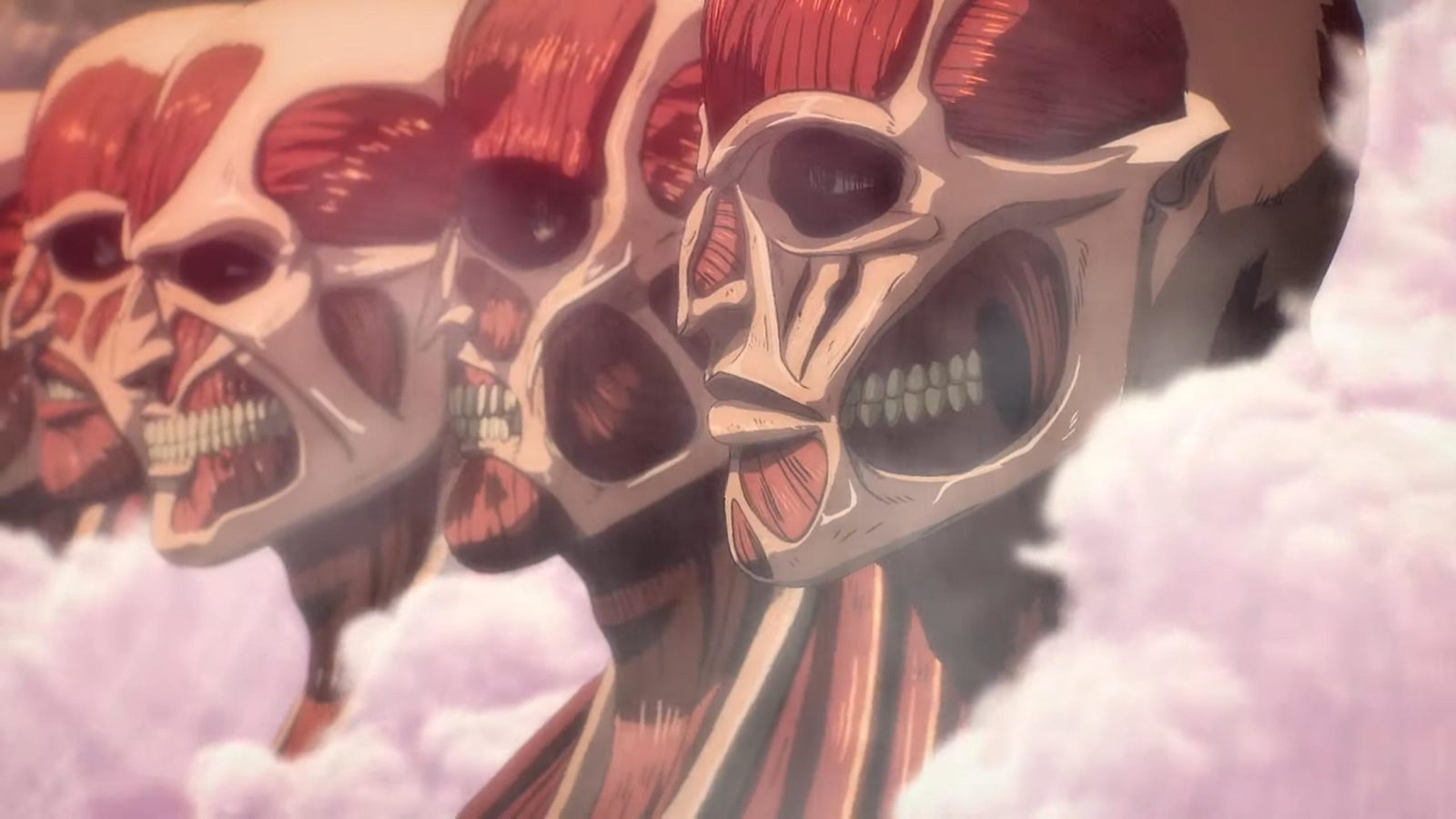Throughout history and culture, the image of a “Huge Titan” has fascinated humankind, embodying ideas of immense power, overwhelming strength, and lar
Throughout history and culture, the image of a “Huge Titan” has fascinated humankind, embodying ideas of immense power, overwhelming strength, and larger-than-life presence. Titans, whether in mythology, natural phenomena, or modern fiction, represent forces that dwarf ordinary experience and challenge human limits.
This article explores the significance of Huge Titans across different realms — ancient legends, natural wonders, scientific discovery, and cultural impact. By understanding the varied interpretations of Huge Titans, we gain insight into why these colossal figures remain enduring symbols in our collective imagination.
Titans in Ancient Mythology: The Giants Who Shaped the Cosmos
The original Titans were mythological giants from ancient Greek stories, renowned for their incredible power and role in cosmic history.
The Mythical Titans and Their Legacy
The Titans were the elder gods born of Gaia (Earth) and Uranus (Sky). They preceded the Olympian gods and ruled the universe during the mythic Golden Age. Titans such as Cronus, Oceanus, and Hyperion personified elemental forces — time, oceans, and the sun.
Their story includes a legendary battle known as the Titanomachy, where the Olympian gods overthrew the Titans to establish a new order. This conflict symbolizes the clash between primal chaos and organized civilization.
Cultural Importance of Titans
The Titans symbolize not just brute strength but the raw and untamed forces of nature and existence. Their colossal size and power reflect humanity’s attempts to understand the origins of the world and the vast cosmic forces that shape life.
Huge Titans in the Natural World: Giants Among Us
The term “Huge Titan” naturally applies to some of the largest and most powerful natural phenomena on Earth, where scale is a defining feature.
Massive Trees: Nature’s Living Giants
Among the largest living organisms on Earth are giant sequoias and coast redwoods, towering trees that can reach over 350 feet tall. These “Titans” of the forest stand as living monuments of endurance, having survived for thousands of years.
Their immense size challenges our perception of life and growth, making them natural symbols of longevity and resilience.
Colossal Animals: Titans of the Animal Kingdom
The animal world is home to true Titans, such as the blue whale — the largest creature to have ever existed on Earth. Measuring up to 100 feet in length and weighing over 200 tons, blue whales embody the staggering scale of life in our oceans.
Other examples include massive dinosaurs like the Argentinosaurus, whose fossils reveal creatures as long as 100 feet and weighing tens of tons, true “Titans” of prehistoric times.

Geological Titans: Mountains, Volcanoes, and Icebergs
Natural formations such as the Himalayas or the volcanic Mount Fuji are geological Titans, shaped by Earth’s tectonic forces over millions of years. Icebergs and glaciers, sometimes the size of small cities, also represent massive and powerful natural structures.
These natural Titans emphasize the dynamic and sometimes violent forces shaping our planet.
Huge Titans in Modern Media: The Age of Colossal Creatures
The idea of Huge Titans continues to thrive in contemporary entertainment, symbolizing overwhelming power and existential threats.
Titans in Anime and Manga
The popular anime Attack on Titan brought the concept of Titans to a global audience, portraying gigantic humanoid beings that threaten humanity’s survival. These Titans are terrifying in size and strength but also mysterious, driving the narrative of survival, fear, and hope.
Titans in Fantasy and Sci-Fi
Many fantasy and science fiction stories feature Titans as enormous deities, monsters, or mechanical giants. They serve as metaphors for insurmountable challenges or as guardians wielding vast power.
Video Games and Titans
In gaming, Titans often appear as massive bosses or playable characters. Their size and power create epic battles and unforgettable experiences. Games like Titanfall and God of War highlight how these colossal beings enhance storytelling and gameplay.
Scientific Titans: The Celestial Giants
The concept of Titans extends beyond Earth into the vastness of space, where enormous planets and moons dwarf our imagination.
Titan, Saturn’s Largest Moon
One of the most famous space Titans is Titan, the largest moon of Saturn. It is bigger than the planet Mercury and has a dense atmosphere rich in nitrogen. Titan’s lakes of liquid methane and ethane make it one of the most intriguing objects in our solar system, possibly holding clues about the origins of life.
Gas Giants: Jupiter and Saturn
Planets like Jupiter and Saturn are themselves Titans — massive gas giants with powerful magnetic fields and dozens of moons. Their sheer size and gravitational influence have shaped the structure of the solar system.
Stars and Black Holes
Beyond planets, stars and black holes represent Titans on a cosmic scale, with masses many times that of our sun. These celestial Titans influence galaxies and are critical to understanding the universe’s life cycle.
The Symbolic and Metaphorical Use of Huge Titans
“Titan” is also a powerful metaphor in language and culture.
Titans of Industry and Thought
People who excel massively in their fields, such as business, sports, or science, are often called Titans — Titans of industry, Titans of finance, or Titans of innovation. The term conveys dominance, leadership, and groundbreaking impact.
Titans as Metaphors for Challenges
Huge Titans can also symbolize enormous challenges or obstacles. Describing a problem as a “Titan” suggests it is huge and difficult to overcome, requiring great strength and perseverance.
Why Do Huge Titans Fascinate Us?
The fascination with Huge Titans taps into fundamental human emotions and ideas.
Awe and Wonder
Humans are naturally drawn to things that exceed normal scale, evoking awe. Huge Titans inspire wonder because they represent extremes — of power, size, and mystery.
Fear and Respect
Gigantic forces can be intimidating and fearsome. Titans embody this duality, commanding respect and caution, much like natural disasters or unknown cosmic forces.
Reflection of Human Aspirations
Titans also mirror human aspirations — to grow, to conquer, and to stand out. They inspire stories of heroism and struggle against immense odds.
Frequently Asked Questions (FAQs)
What does the term “Titan” mean?
Originally from Greek mythology, “Titan” refers to a group of powerful deities. Today, it also describes anything very large, powerful, or influential.
Are Titans based on real creatures?
While mythological Titans are fictional, the term applies metaphorically to real-world giants like huge animals, trees, and planets.
What is the largest Titan in the natural world?
The blue whale is the largest living animal Titan. Among trees, giant sequoias are the largest by volume.
Why do stories about Titans remain popular?
Titans symbolize universal themes such as strength, chaos versus order, and the human struggle against overwhelming forces, keeping their stories relevant.
What is Titan in space?
Titan is Saturn’s largest moon, notable for its thick atmosphere and surface lakes of hydrocarbons.
Can “Titan” be used in everyday language?
Yes, it’s commonly used metaphorically to describe influential people, powerful companies, or huge challenges.
How do modern media portray Titans?
Modern media often depict Titans as gigantic creatures or machines that are either threats or protectors, emphasizing their immense size and power.
The legend and legacy of Huge Titans remind us of the awe-inspiring forces around us — whether mythic, natural, or imagined. They challenge our perception of scale and power, fueling stories and symbolizing humanity’s encounter with the immense and unknown.
More Info: primereport




COMMENTS